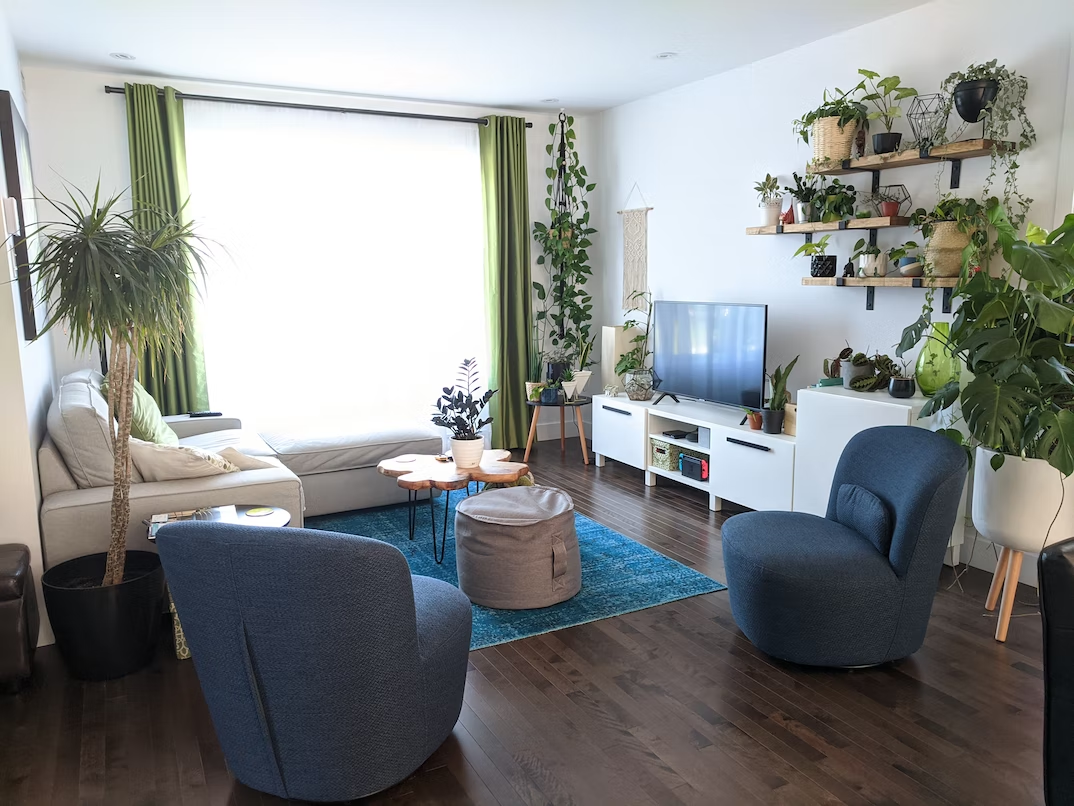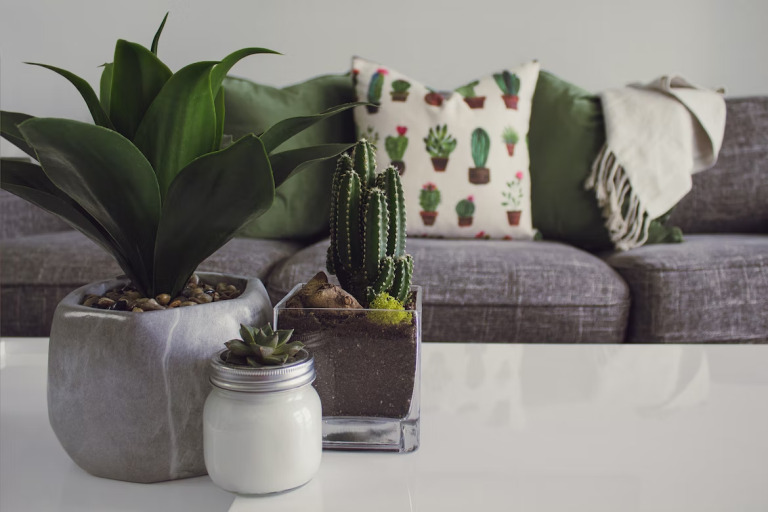A trend for houseplants has been growing rapidly in recent years. Now, it’s common to see homes filled with numerous plant species, adding a touch of luxury and exoticism to the environment. The range of houseplants available today is incredible, from the iconic Swiss cheese plant to the dramatic Neoregelia with its tiger-print pattern and prickly leaves.
These plants have become just as important as furniture in many homes, and plant propagators today are not only knowledgeable about horticulture but also know how to pot and care for plants, ensuring that they thrive. With the tips we’ve provided below, you’ll be able to learn how to decorate plants and create a living space that is both stylish and refreshing. So go ahead, add some plants to your home, and watch as your space comes to life!
How Do I Incorporate More Plants in My Room?
Do you find yourself constantly on the hunt for new plants to add to your collection? If you’re running out of floor space, don’t worry! The solution is simple: think vertically. There are so many creative ways to display your plants without crowding your home. Hang them from the ceiling, place them on room dividers, or display them on wall shelves. Not only will you save space, but by storing your plants vertically you might even help them thrive by giving them access to more light.
If you want to decorate your home with plants but don’t know where to start, a plant app might be the answer to your green thumb woes. With the help of LiLy – Plant Identificator, you can easily choose plants for each area of your home. Whether you have a dimly lit bedroom or a living room with furry friends, this app for iPhone has got you covered.
This plant identifier app allows you to easily select plants that will flourish in less-than-ideal lighting situations and ones that are safe for your furry friends to be around. With this app for plant identification, you can finally create a lush indoor garden that not only complements your aesthetic but also supports a happy and healthy plant ecosystem.
1. Select Safe Plants for the Living Room
Lighting is a crucial factor when choosing indoor plants, as they typically need access to bright, concentrated light to thrive.
And if you have pets, it’s important to select non-toxic plants to keep them safe. Pothos reduces carbon dioxide by 6.5%, while Philodendron, dracaena, and anthurium plants stand out for their beauty. Ferns are another popular choice for indoor plant walls, but they do need a bit more care. You may decorate your living room with such plants as Anthurium, Snake Plant, ZZ Plant, Peace Lily, Pothos, Moth Orchid, Aglaonema, Norfolk Island Pine, and many more.
2. Pick Air-Cleaning Plants for the Bedroom
Did you know that having a houseplant in your bedroom can do more than just add a touch of greenery to your decor? Research has shown that plants can actually help improve the air quality in your home by reducing indoor air pollutants such as benzene and formaldehyde.
But that’s not all – recent studies have suggested that having plants in your bedroom can also help reduce stress and promote better sleep, which is essential for a healthy lifestyle. So if you’re looking to spruce up your sleep space, consider investing in a Peace Lily, Areca palm tree, Mother-in-law tongue, or Gerbera. Not only will these plants add a beautiful touch to your bedroom, but they’ll also work hard to keep your air clean and your stress levels low.
3. Buy Lush Plants for Kitchen
Cooking can be both a fulfilling and stressful activity, especially if you’re trying out new recipes. Adding a touch of nature to your kitchen with plants can transform the space into a calming oasis. Not only do plants release fresh oxygen and purify the air, but recent studies have also shown that they improve creativity. Even if your kitchen doesn’t have optimal lighting conditions, there are still plenty of plants that can thrive indoors.
LED grow lights are a great alternative for kitchens without access to natural light, producing the perfect amount of brightness for your greenery without adding any extra heat to the room. An average house plant produces 2.4L of oxygen per day. Surrounding yourself with plants while cooking is an easy way to bring a bit of nature indoors and make the most of your time in the kitchen.
4. Use High-Humidity Plants for Bathroom
Using indoor decorative plants, you can transform your bathroom into a spa-like oasis! Not only do plants add a touch of natural beauty to your bathroom decor, but they also act as fantastic dehumidifiers. Don’t worry if your bathroom lacks natural light – with the right plants, you can create your own little indoor jungle. Opt for plants that thrive in high humidity, like Boston ferns, heartleaf philodendrons, prayer plants, and peperomia rotundifolia. Bringing plants into your bathroom can transform it into a relaxing retreat.

What is the Best Mix for Indoor House Plants?
A well-rounded mixture may include compost for nutrition (30%), peat moss for water retention (25%), perlite and vermiculite for drainage (15% each), and potting soil for added texture (15%). Don’t let poor soil quality be the downfall of your plant babies – take the time to nourish them properly.
Bringing the beauty of the great outdoors into your home can offer more benefits than just aesthetic ones. Lush plants can grant cleaner air, help reduce stress levels, and even stimulate creativity. You can transform any room in your home by adding a little bit of greenery.
Whether you prefer small succulents or towering ferns, incorporating plants into your decor can bring a fresh and lively feel to your living space. By creating your own soil mix, you can customize the nutrients to meet the unique needs of each individual plant. With a little bit of creativity, you can craft the perfect soil blend to help your plants reach their full potential. So why not unleash your inner botanist and let your love for nature blossom alongside your stunning indoor greens?

